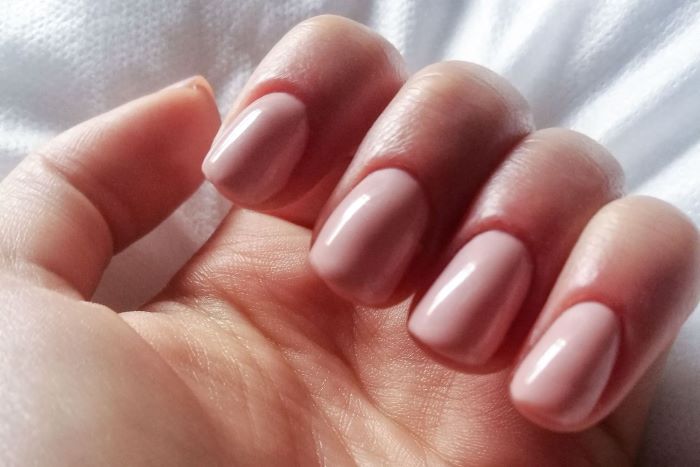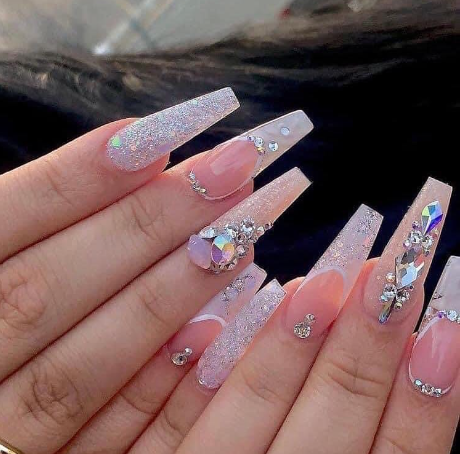When it comes to getting a fabulous manicure, women today are spoiled for choice. From classic polish to long-lasting gel and acrylic options, there are more nail styles than ever before. But with so many possibilities, it can be tricky to decide which route is best. Two of the most popular salon manicure options are gel and acrylic nails. But what exactly sets these apart? And is one better than the other? in this article we talk about Gel vs. Acrylic Nails-Which is Right for You.
What are Gel Nails?

Gel manicures have soared in popularity over the past decade. Unlike regular polish, gel polish is formulated with polymers and plasticizers that allow it to last on the nails for weeks without chipping or fading. After applying gel polish, the manicurist will cure it under an LED or UV light, which solidifies the formula and creates a super glossy, resilient finish.
Gel manicures typically involve very little damage to the natural nail. In most cases, the nail technician will just lightly file the surface of your nail to remove shine and prep it for gel application. The entire process is relatively quick and you can get in and out of the salon with fabulously glossy nails in under an hour.
One major perk of gel nails is longevity. With proper at-home care and avoidance of nail damage, a gel manicure can last up to three weeks chip-free. The glossy finish stays brilliant the whole time too, unlike regular polish that starts to fade within days. This makes gel perfect for people who want an extended period between salon visits.
What are Acrylic Nails?
Acrylic nails have been popular since the ‘80s. The process involves using a liquid monomer and polymer powder to create a thick, durable extension that gets adhered to your natural nail. The acrylic hardens quickly under heat and pressure, allowing the technician to sculpt and shape each nail to your desired length and style. Artificial tips can be placed on top of your natural nails as an extension base too.
The major advantage of acrylics lies in their tremendous durability and flexibility in shaping. Even long, dramatic nail shapes are possible. Plus, minor cracks and breaks can often be repaired without needing to remove the entire acrylic nail. Many people love acrylics because they allow weak, bitten down or damaged nails to grow underneath the protection of acrylic while still looking fabulous.
Key Differences Between Gel and Acrylic Nails
When evaluating gel vs. acrylic nails, there are a few major differences that set these popular manicure techniques apart:
Application and Removal
Gel nails can be applied and removed with very little drilling or filing down of the natural nails. Acrylic application and removal requires more intense filing and buffing that can damage natural nails over time.
Damage Potential
The gentle nature of gel manicures causes very little damage to natural nails, while acrylics require intense filing and cannot be soaked off with acetone like gel can. This makes gels generally safer long term.
Appearance
Gel has a high-gloss shine that looks ultra glamorous. Acrylics have more of a frosted, opaque finish. Salon technicians can blend the two by applying gel polish on top of acrylics however.
Durability
Acrylics tend to be more durable and resistant to breaks. Gels can chip if the nails are knocked hard enough. But gels won’t suffer small cracks like acrylics.
Length Potential
You can achieve greater lengths, shapes and styles with acrylic nails since they are sculpted on. Gels have a shorter max length since they rely on your natural nail.
Maintenance
Both options should be filled and maintained every 2-3 weeks at the salon. Acrylics may need more frequent touch ups. At home care is similar, avoiding water exposure as much as possible.
Cost
The average cost is similar: a full gel or acrylic set may run between $30-$50. Acrylic fills may be slightly more expensive over time.
Soak/Removal Process
Gels can be soaked off at home or removed quickly in-salon with acetone. Acrylics must be carefully filed and buffed down for safe removal.
Time Commitment
Gel manicures take 30-40 minutes start to finish. A full set of acrylics takes 90 minutes to two hours.
Nail Health Over Time
If removed safely and properly, gels will not damage your nails. Acrylics weaken nails substantially over time due to repeated filing/buffing.
How to Choose Between Gel and Acrylic Nails
When deciding between gel vs. acrylic nails, the most important factors to consider are your lifestyle, nail health and desired results.
Here are some key questions to ask yourself when choosing a style:
Do you want lengthy or dramatic nail shapes?
Acrylics allow for more customization.
Is durability or chip-resistance more important?
Opt for acrylics if durability matters most.
Do you prefer a high-gloss or more natural finish?
Gels offer brilliant shine while acrylics look more understated.
Does nail health and strength matter?
Gel is gentler on nails long term.
Is time a factor?
Quick-dry gel manicures are ideal for busy schedules.
Do you want to space out salon visits?
Gels can last 3-4 weeks between fills.
Are you hard on your hands?
Acrylics resist breaks from activity better.
Do you enjoy switching up nail art and colors?
Gel makes experimenting easier.
The Takeaway
When it comes to choosing between gel vs. acrylic nails, consider what matters most for your lifestyle. Gel manicures are gentle, quick, and allow you to play with trendy colors. But acrylics offer more dramatic shapes, better durability and chip-resistance. Analyze your personal priorities, nail health, and schedule demands before deciding. There’s no universally “better” option – gel and acrylic nails both work beautifully when chosen wisely! Consult an experienced nail technician for recommendations too. With the right guidance, you can rock a fabulous manicure for weeks on end, whether you select glossy gel or strong acrylic enhancements. I sincerely hope you find this “Gel vs. Acrylic Nails-Which is Right for You?” article helpful.

Belle is a skilled nail artist and writer with over 5 years of experience in the beauty industry. As the writer for NailsSalonsFlorida.com, she provides expert recommendations and insights into the best nail salons across Florida. With a professional certification in Nail Technology, Belle’s passion for nail care and design informs her detailed and valuable content. Follow her work and get inspired on Instagram.
